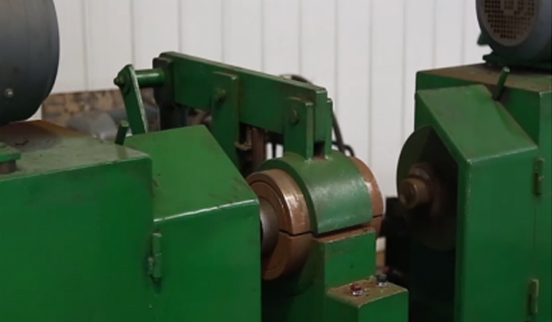 Afrikaans
Afrikaans  Albanian
Albanian  Amharic
Amharic  Arabic
Arabic  Armenian
Armenian  Azerbaijani
Azerbaijani  Basque
Basque  Belarusian
Belarusian  Bengali
Bengali  Bosnian
Bosnian  Bulgarian
Bulgarian  Catalan
Catalan  Cebuano
Cebuano  Corsican
Corsican  Croatian
Croatian  Czech
Czech  Danish
Danish  Dutch
Dutch  English
English  Esperanto
Esperanto  Estonian
Estonian  Finnish
Finnish  French
French  Frisian
Frisian  Galician
Galician  Georgian
Georgian  German
German  Greek
Greek  Gujarati
Gujarati  Haitian Creole
Haitian Creole  hausa
hausa  hawaiian
hawaiian  Hebrew
Hebrew  Hindi
Hindi  Miao
Miao  Hungarian
Hungarian  Icelandic
Icelandic  igbo
igbo  Indonesian
Indonesian  irish
irish  Italian
Italian  Japanese
Japanese  Javanese
Javanese  Kannada
Kannada  kazakh
kazakh  Khmer
Khmer  Rwandese
Rwandese  Korean
Korean  Kurdish
Kurdish  Kyrgyz
Kyrgyz  Lao
Lao  Latin
Latin  Latvian
Latvian  Lithuanian
Lithuanian  Luxembourgish
Luxembourgish  Macedonian
Macedonian  Malgashi
Malgashi  Malay
Malay  Malayalam
Malayalam  Maltese
Maltese  Maori
Maori  Marathi
Marathi  Mongolian
Mongolian  Myanmar
Myanmar  Nepali
Nepali  Norwegian
Norwegian  Norwegian
Norwegian  Occitan
Occitan  Pashto
Pashto  Persian
Persian  Polish
Polish  Portuguese
Portuguese  Punjabi
Punjabi  Romanian
Romanian  Russian
Russian  Samoan
Samoan  Scottish Gaelic
Scottish Gaelic  Serbian
Serbian  Sesotho
Sesotho  Shona
Shona  Sindhi
Sindhi  Sinhala
Sinhala  Slovak
Slovak  Slovenian
Slovenian  Somali
Somali  Spanish
Spanish  Sundanese
Sundanese  Swahili
Swahili  Swedish
Swedish  Tagalog
Tagalog  Tajik
Tajik  Tamil
Tamil  Tatar
Tatar  Telugu
Telugu  Thai
Thai  Turkish
Turkish  Turkmen
Turkmen  Ukrainian
Ukrainian  Urdu
Urdu  Uighur
Uighur  Uzbek
Uzbek  Vietnamese
Vietnamese  Welsh
Welsh  Bantu
Bantu  Yiddish
Yiddish  Yoruba
Yoruba  Zulu
Zulu Understanding the Function and Importance of Drive Pulleys in Mechanical Systems and Machinery
Understanding Drive Pulleys A Key Component in Mechanical Systems
Drive pulleys are an essential component in various mechanical systems, enabling the transfer of power and motion from one part to another. They play a crucial role in applications ranging from automotive engines to industrial machinery and conveyor systems. This article explores the design, functionality, and significance of drive pulleys in modern engineering.
What is a Drive Pulley?
At its core, a drive pulley is a circular wheel that is mounted on an axle and used to transmit power through a belt or rope. The pulley operates on the principles of friction and tension, allowing it to grip the belt effectively and ensure smooth motion. Drive pulleys can be categorized as either driving pulleys, which are connected to a power source, or driven pulleys, which receive motion from the driving pulley.
Design and Types of Drive Pulleys
Drive pulleys come in various designs, each tailored for specific applications
. The most common types include1. V-Belt Pulleys These pulleys have a V-shaped groove that accommodates V-belts, providing increased friction and ensuring efficient power transfer. V-belt systems are widely used in automotive applications and HVAC systems.
2. Flat Pulleys Flat pulleys feature a flat surface for use with flat belts. They are often found in older machinery and systems where high-speed performance is not a priority.
3. Sprockets While technically a type of pulley, sprockets are designed for use with roller chains. They are commonly used in bicycle drive trains and various industrial machinery due to their robustness.
drive pulley

4. Idler Pulleys These pulleys help guide the belt, maintaining tension within the system without driving any load. Idler pulleys are often used to improve the efficiency of belt-driven systems by reducing slippage.
Functionality and Applications
The primary function of a drive pulley is to facilitate movement by converting rotary motion from a driving source into linear motion transmitted via a belt or rope. This function is vital in numerous applications
- Automobiles In vehicles, drive pulleys are part of the engine's accessory drive system, connecting components like alternators, water pumps, and air conditioning compressors. - Manufacturing Industrial machines often use drive pulleys to operate conveyor belts, allowing for the efficient movement of goods within a production facility.
- Robotics In robotic systems, drive pulleys enable precise control of movement, whether in robotic arms or wheeled platforms, enhancing functionality and performance.
Importance in Engineering
The significance of drive pulleys cannot be overstated in the field of engineering. They enhance the efficiency of mechanical systems, reduce wear and tear on components, and allow for the smooth operation of machines. The selection of appropriate pulleys can lead to energy savings and improved performance in various applications, ultimately contributing to the overall reliability and productivity of the machinery involved.
Conclusion
In summary, drive pulleys are vital components in a multitude of systems across different industries. Their diverse designs and functionalities facilitate efficient power transmission, allowing machines and vehicles to operate smoothly and effectively. Understanding the role and advantages of drive pulleys can greatly enhance the design and operation of mechanical systems, paving the way for innovations in engineering and technology. Whether in a factory, a vehicle, or a robotic platform, drive pulleys continue to play a pivotal role in our mechanical world.
-
Revolutionizing Conveyor Reliability with Advanced Rubber Lagging PulleysNewsJul.22,2025
-
Powering Precision and Durability with Expert Manufacturers of Conveyor ComponentsNewsJul.22,2025
-
Optimizing Conveyor Systems with Advanced Conveyor AccessoriesNewsJul.22,2025
-
Maximize Conveyor Efficiency with Quality Conveyor Idler PulleysNewsJul.22,2025
-
Future-Proof Your Conveyor System with High-Performance Polyurethane RollerNewsJul.22,2025
-
Driving Efficiency Forward with Quality Idlers and RollersNewsJul.22,2025





























